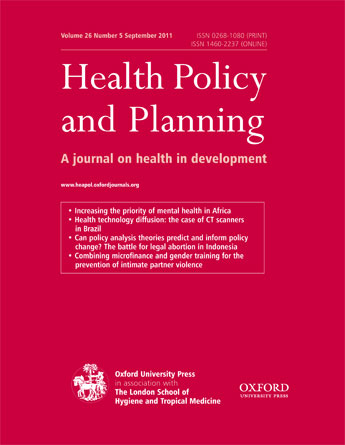Public health infraestructure and equity in the utilization of outpatient health care services in Peru
| Year | : | 2002 |
|---|---|---|
| Author/s | : | Martin Valdivia |
| Area/s | : | Poverty and equality, Natural resources, extractive industries and social conflict, Health and nutrition |
[2002] VALDIVIA, Martín. “Public health infraestructure and equity in the utilization of outpatient health care services in Peru”. Health Policy and Planning, 17(Suppl 1): 12-19.
This article analyzes the magnitude and nature of socioeconomic differences in the utilization of outpatient health care services in Peru. In particular, it explores the potential equity-enhancing effect of the expansion and improvements in the network of health centres during the 1990s.
The Peruvian health reform made relatively little progress in terms of the reform agenda promoted internationally during the 1990s. Nevertheless, the expansion of the public network of health centres and the improvements in their equipment has been noteworthy during the same period. Using the 1997 survey of the Peruvian Living Standards Measurements Study (PLSMS), we find large differences in the utilization of outpatient health care systems services. The richest to poorest quintile ratio is 1.9, and even larger in rural areas. Estimating a probit model with random effects at the district level to control for systematic geographic bias associated with the optimal public allocation of such infraestructure, we find the income effect to be very large, even after controlling for other socioeconomic characteristics. Finally, we also find that the expansion of the public network of health centres has indeed an equity-enhacing effect, but this is rather small.
These results indicate that although the expansion of the public network of health facilities may be necessary, it is not sufficient to promote equity in the utilization of health care services by Peruvian adults, especially in rural areas. It is important to look deeper into the costs of consultations and drugs as economic barriers to the utilization of health services by the poor. In particular, the expansion of health insurance mechanisms for the poor should be carefully monitored and evaluated.






